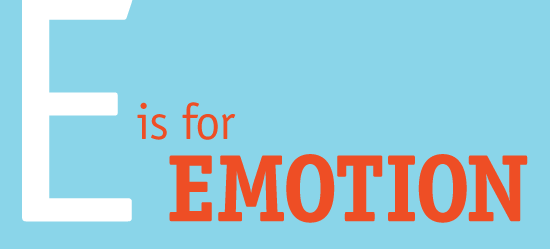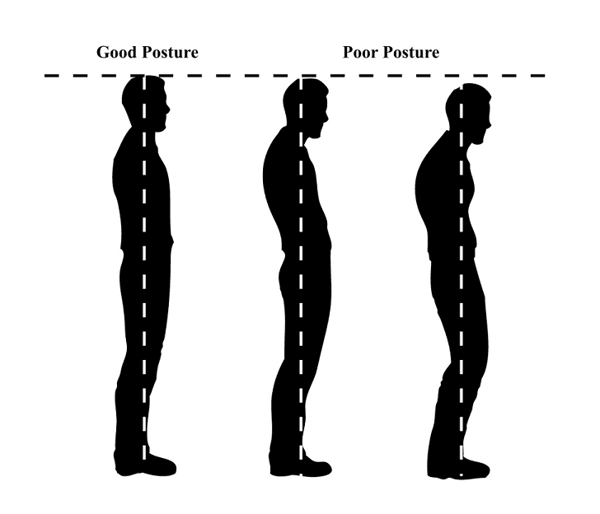What makes a great speaker?

A great speaker is able to captivate an audience with exciting stories through the way they speak, their use of body language and their ability to deliver a message in an authentic and compelling manner.
When we are in the throws of a great speaker we feel at ease and relaxed. We are taken on a journey as they enthral us with emotion. Essentially, we are engaged without realising. This is because a great speaker can keep our "involuntary attention".
Being a great speaker has many benefits. From your relationships to career success, both your personal and professional life will prosper as a result of becoming a charismatic speaker. So let's begin on the journey to helping you become a captivating communicator.
How can we speak with emotion?

"Key to becoming a charismatic speaker is being able to speak with emotion."
Emotion allows our message to come across with impact. Speaking with a lack of emotion results in a our listener becoming uninterested and unengaged. Read this blog on how to speak eloquently.
"Vowels allow us to express emotion."
For babies, their very first sounds are vowel sounds. They are right at the essence of the fundamental spawning of all thought. Even animals have vowel sounds. They have screeches and wails. That’s what we need right at the beginning. It’s how we communicate our most basic survival instincts - hunger, fatigue, pain etc.

"I-O-U Emotion!"
You owe your listener a healthy does of emotion. Doing so requires you to open your mouth wide enough around the vowel sounds. This allows the sound that comes out to be unhindered. If we don't articulate vowel sounds properly we risk sounding as dead and lifeless as an old hunk of wood rather than as full and nourishing as a rose.
Vowels help us to connect with our listeners

If we open our mouth around the vowel and let out some of our feelings, then we can better connect with other people.
Try saying the following sentence for yourself with your teeth clenched firmly together:
"I am so angry right now, I am in a total rage!"
Now try saying it, with your mouth open. Can you notice the difference in feeling? The first is like you are stuck, unable to release your emotions and the second is like an outpouring of emotion.
This link between vowels and feeling shows us that how we express ourselves in the world is linked to how we feel.
Watch this video to find out how to empower your speech by using vowels:
Why we shouldn't drop consonants
 "Consonants are about efficiency and respect of the language."
"Consonants are about efficiency and respect of the language."
Consonants are a way of containing emotion and for finishing off your thoughts. They make things more sophisticated, they show that we respect the language.
If we drop consonants we convey a lack of care and thought about what we are saying. It’s important to pronounce consonants, particularly the ones in a word which has vowels on either side like “butter” or the ones at the end of a sentence or a thought.
Speech needs emphasis, pauses and hooks

"Emphasis shows our listener exactly what is important."
It’s important in communication to build division for your listener. To do that, you need to direct them with your voice and with your body language to words and ideas that are important.
By using intonation, stress and pitch, we can adjust the sound of our voice to go louder, longer or higher. This allows our listener to construe which words we are emphasising and for what effect. You'll notice that leaders like Barack Obama do this when they're delivering an important speech.
"Pauses help our listener follow what we are saying."
It’s important that when we speak, we’re taking regular pauses. This helps automatically break up our thoughts into smaller thoughts and smaller units of speech. As a result, our listener is better able to follow and understand what we are saying.
"Hooks show our listener we are engaged with what we are saying."
For our listener to be interested in what we are saying, we ourselves have to be interested in what we are saying. Hooks are a great way to arouse curiosity and hold our listeners engagement. That's why they are a crucial component of delivering a speech or presentation.
We call this vocal charisma - read out blog, What is vocal charisma and how can we achieve it?
To incorporate hooks into your speech, consider the following:
- Describe an incident
- Ask for a show of hands
- Ask a rhetorical question
- Make a promise
- Get them laughing
- Make a provocative statement
- Cite an unusual or shocking statistic
How to communicate with finesse

"Effective communication hinges on how well you can deliver your idea."
To do that, you need to have a clear understanding of what you are saying and the most efficient way of expressing it. That can be done both with eye contact and with voice, but as well as that, a more intangible sense of intention.
"When we speak with intention we become more authentic communicators."
Speaking with intention ensures that your sound and your inflection reflects the emotional aspect of what you are saying. If you are drowning, gasping for air, you will likely scream "HELP!" You will have intention in your voice because you intend on being rescued. As a result, people around you are more likely to react to what you are saying.
"When you go up at the end of a thought, in order to finish the thought, it must come down."
Questions - go up at the end of a sentence.
e.g. "How old are you?"
Statements - go down at the end of a sentence.
e.g. "I'm thirty years old".
If we are not asking a question, it's important that we project certainty and confidence in what we are saying. We don’t get the certainty until it’s landed, and that landing is about coming down. This is known as vocal gravity.
Your body language says a lot about you

"First impressions affect communication. They are absolutely crucial because people will judge you within the first seven seconds of meeting you."
To ensure that judgment is a positive one, it’s important that your body language is warm, open and inviting. That means avoiding the following negative body language signals.
- Your eyes are pointing downwards You’re not making eye contact
- Your mouth is sour Your lips are turned down
- Your mouth is just hanging open and unengaged
- Your shoulders are curved forwards
- Your chin is high or low
- Your hands are hanging by your side, or if they’re stuffed in your pockets
These different nonverbal communication gestures convey a lack of confidence and care.
How do I improve my posture?
 "Posture is hugely important and one inch makes all the difference."
"Posture is hugely important and one inch makes all the difference."
Poor posture can project a lack of confidence. Hunching your shoulder forward, arching your back and tilting your head forwards are all signs of bad posture.
So how do you improve your posture?
- Keep your shoulders back and relaxed
- Pull in your abdomen
- Keep your feet about hip distance apart
- Balance your weight evenly on both feet
- Try not to tilt your head forward, backwards or sideways
- Keep your legs straight, but knees relaxed
"Imagine a string from the top of your head that’s pulling you upwards."
Doing this allows everything to hang in alignment. You can touch the top of your head to get that imaginary sense of string holding things upright and everything can drop from that space.
"Imagine there’s a little table under your chin."
It’s not too up and it’s not too down. It’s a little table your whole chin is balanced on and it’s facing forward. This is good posture. When you find that position, walk around in it.
"Try putting your shoulders in different positions."
First put them forward a couple of inches, and now, straighten them back, and now, try putting them way back a couple of inches. Walk around in all three positions and see what it feels like – because observing your body is the best way to get the information you need to be a great communicator.
Your hands say a lot!

"Gestures allow you to highlight and underline certain concepts and ideas."
Using your hands to emphasise and illustrate your speech helps paint a picture for your listener. This allows you to connect with your listener and improve the clarity of your message.
Avoid having your hands:
- In your pockets
- By your side
Instead, keep your hands in the performance space. This is anywhere from your belly button upwards.
Read this blog on Power Poses: The Body Language Of Winners.
"As humans we are able to express countless emotions without saying a word."
Unlike some forms of nonverbal communication, facial expressions are universal. The facial expressions for happiness, sadness, anger, surprise, fear, and disgust are the same across cultures.
It's important to consider how your eyes (and eyebrows), mouth and smile are responding to the emotion of what you are saying or listening to.
- Raising your eyebrows shows you are curious
- Opening your eyes wider shows you are speaking with intent.
- Opening your mouth wide shows you are shocked
These are just some examples of how we can use our facial expressions to reflect the emotion of what we are saying or what is being said.
"Learn from the communicators you admire."
Take anyone that you rate as a communicator and see how they use their eyes and their smile to engage.
You will find that the most captivating and charismatic communicators use a lot of facial expression because that’s where so much of the soul happens. That’s where so much of the feeling emerges physically and therefore, it’s the way we can draw people in. It’s a way to attract and engage.
Our eBook 'How To Look & Sound Confident' is packed with gems from our trademarked method. Click here to get your copy:
What are the communication spaces?
Mode is we connect with people. We will need to adopt a different mode of communication depending on the social context of the situation we find ourselves in.
"Telling someone a secret or listening intently? Use The Intimate Space."
- Body language and gestures are smaller
- Eye contact is more direct
- Tone of voice is lower, quieter and more subdued
- More contained emotion
"Chatting casually with friends? Use The Relaxed Space."
- Eye contact is not as concentrated/intense
- More volume, melody and colour in voice
- Gestures flow more naturally
- Relaxed body language and inclusive
"Delivering a speech or presentation? Use The Performance Space."
- Speech and body language is bigger and more formal.
- Gestures are structured
- Volume of voice increased
- More pauses, emphasis and hooks
"Speaking to an audience of hundreds or thousands? Use The Transformational Space."
- Everything you do must be bigger and bolder.
- Gestures more pronounced
- Everything is said with intent
By doing a few simple things with your body, your face and your hands, you can create and manage that first impression when you walk into a room. Doing so will allow you to control what people think when they see you for the first time.
How do I build rapport?

"Communication is all about building connections with people."
People have to want to listen to you not just because you’re compelling, but because they feel like you’ve got something to say. They feel that you have values that are corresponding to theirs and that they feel open, receptive and warm to you.
"Connecting is the best reason to smile at someone."
When we smile at people genuinely we show that person that we’re interested and engaged in them. We show that we’re warm, safe and caring – caring about them and what they think about us.
|
Genuine smiles (Duchenne smile) |
Non-genuine smiles |
|
Driven by connection - similar sense of humour / values / pleasures etc Activate 47 muscles around your eyes (the entire face) - sets off chemical reactions in your brain which tells you that you’re smiling happy, to release serotonin. Doesn’t fade quickly |
Driven by an ulterior motive - social pressure, selfish gain etc.
Short lasting - lips not turned up anymore and nothing in their face or their psychology would have changed. |
"Listening is about giving people your attention fully in a moment so that they know they are the one thing occupying your mind."
The person speaking consciously or unconsciously will be aware that you’re not fully present. This could cause them to feel insecure or offended and therefore, they are likely to give up trying to engage you.
Being half-present as a listener has a reductive effect on the quality of your communication and the quality of your connection. To show that you are listening and fully present do the following:
- Direct your eye contact and open your body up to them.
- Nod and making filler sounds such as “uhm, ah, great, really,”
- Listen with your head and respond to the subtleties underneath the words.
- Smile supportively when the tone is positive
Showing sensitivity, curiosity and support to your listener will help you to become more important in the dynamic and allow the conversation to open up to more depth. It will also encourage them to listen more attentively when it's your turn to speak.
"Smiling lifts your voice because it changes the shape of the vocal cavity in your mouth."
That's why we can tell if someone is smiling even whilst speaking to them on the phone. Starting a conversation with someone feeling good is a brilliant starting place or springboard to wonderful things communication-wise.
How to deliver the perfect presentation
 "Public speaking is one of the most feared experiences of being a human statistics straight away after dying or death."
"Public speaking is one of the most feared experiences of being a human statistics straight away after dying or death."
There’s a lot of pressure around it because when you’re stood in a space or on a stadium or a podium with all eyes on you, it’s fundamentally an unusual and high-stakes position both psychologically and physically to be in.
Generally speaking, a good presentation should be:
- Shorter rather than long
- Dynamic
- Interesting (include a narrative)
Click for 5 tips for overcoming presentation nerves
Want to receive monthly effective communication tips to your inbox? Join the LSW Club:
Good communication is about connecting
- Let your presentation have stories to hold onto, metaphors, illustrations, things that bring it to life.
- Ensure that your presentation has some of you, some of your values, and what makes you tick.
- Let it be connected to as much as you can find you in it.
It’s much more compelling for your audience when they can feel, see and connect with you as a human being. That’s why you want stories and you want something of you and your values.
"You want a beginning, a middle and the end."
Structure is critical for taking your audience on a journey with you. It's all about presenting a situation, identifying a problem and proposing a solution.
"Deliver with pizzazz and sparkle."
Spend most of your time in the performance space but consider alternating between the relaxed, intimate and then the stronger performance space at the appropriate times. This will allow you to find different colours and shades throughout the presentation. In longer presentations, it's especially important to shake up the energy from one to another.
Use the following to colour the emotion behind your communication:
- emphasis
- pauses
- hooks
- downward flection
- gestures
"Practice makes perfect."
If you have not rehearsed your speech you will likely fail to have sufficient focus and intent in what you are saying, partly because you yourself do not know where it is heading. Practising will set you up for success and allow you to communicate your ideas with confidence.
How do I calm my nerves for a presentation?

"Visualise the presentation."
Start from the moment where you’re walking towards the stage. Visualise each moment as you make eye contact with your audience. This create a neural pathway of what you’re going to do in the presentation which essentially tricks your brain into the idea that you’ve already done this and you’ve survived it.
"When you feel the nerves inside you, label what’s going on in your body."
- Tension in my stomach
- My shoulders or back are tense
Pointing out and labelling exactly how you feel brings a more ethereal sense of fear into the here and now. As such, you’ll see it reduces it. It makes it just a thing, just a sensation.
"Understanding that it’s not the adult, it’s the chimp."
The chimp is a way of articulating this idea of your limbic system – the most basic part of your brain which deals with appetites, fears, hunger and anger. That part, that limbic system is where this chimp is. It’s much simpler and the idea here is that you articulate what your chimp is feeling, you understand it’s just your chimp, you own your adult responses and you own your chimp responses but you separate from them. You don’t make them you.
Turning your negative thoughts ("I'm scared about this presentation") into a positive thought ("I'm excited about this presentation") is a great way to help you stay grounded and in control of your nerves.
"Make a list of 10 things to avoid during the presentation."
Quick things that you don’t want to be doing in presentations. If you do all of that and avoid all of the things to avoid, you’re going to be close to delivering special presentations.
When you come into a room with your excellent body language, your shoulders back and your head up, take a moment to connect with your audience and your listeners through eye contact, smile if you want to or feel comfortable. Essentially that moment of connecting allows for you to go, “oh, they’re just people listening to me, wanting to learn.” Remember that – just people wanting to learn what you’ve got to say.




-1.png?width=750&height=300&name=Regular%20Logo%20(750%20x%20300%20px)-1.png)